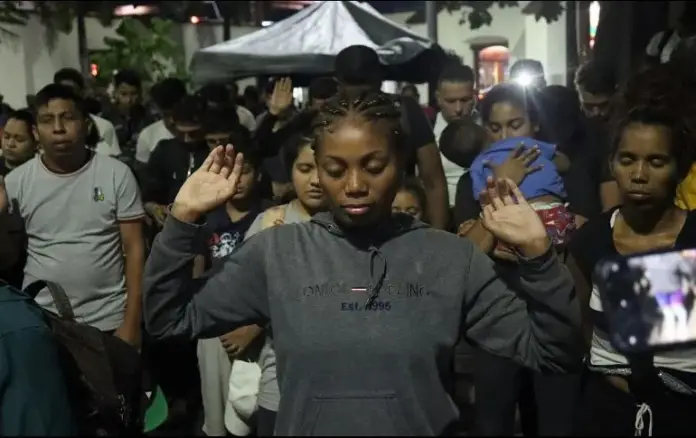Some 1,500 migrants began the year walking in groups from Tapachula with the intention of moving north before Donald Trump assumes the presidency of the United States, despite the fact that the last caravans were dissolved without leaving Chiapas.
The migrants, mostly Venezuelans but also from countries such as Guatemala, El Salvador, Peru or Ecuador, left Tapachula during the early hours of Thursday.
Getting closer to the US border remains the goal for many. Others, faced with Trump’s threats of mass deportations and border closure, aspire to advance to places where they can find work given the few job opportunities in Tapachula, where violence linked to organized crime has multiplied.
Venezuelan Giscarlis Colmenares had been trying for almost three months to get an appointment on the CBPOne platform to be able to legally enter the United States and request asylum there. When she failed, she decided to join the caravan with the main objective of finding a job.
“Work to see if we can move forward or stay there until we get (money) and return to Venezuela,” she explained. The 29-year-old, who is traveling with her uncles and cousin, wants to reach Mexico City and, if she can’t continue north, stay in the capital until she saves enough to buy her ticket back to her country.
Trump’s victory in November multiplied the creation of these groups with the hope of being able to reach the United States before immigration measures are tightened. Since then, at least half a dozen groups left Tapachula on foot, although they all completely dissolved before leaving southern Mexico.
On Thursday, as on previous occasions, the authorities let them advance through southern Chiapas. But usually, after a little more than 100 kilometers, the immigration agency begins to offer transfers to other states in the country that many migrants accept in order to leave the south.
According to the Mexican government, this is part of the migration containment policy, but in most cases, when migrants arrive at these places they are left to their own devices and choose to try to reach the Mexican capital on their own.
President Claudia Sheinbaum has defended this migration policy and announced a “profound transformation” of the National Migration Institute, of which she did not offer any details.
In recent weeks, the government has focused on preparing for the deportations announced by Trump with plans to support Mexicans through consulates in the United States.
In parallel, Foreign Minister Juan Ramón de la Fuente initiated contacts with several of his counterparts in Central and South America to address the migration issue and preparations for future movements by Trump, who will take office on January 20.
The objective, according to Sheinbaum on Thursday, is to hold a meeting of foreign ministers this January to continue the dialogue at the end of 2023 with the main countries of origin and transit of migration. One of the key topics at the meeting will be to coordinate actions in the face of the possible return through Mexico of nationals of other countries.
While walking on Thursday through southern Mexico, Salvadoran Douglas Ernesto, along with his wife and 10-year-old son, said that Trump’s threats “generate fear” but that does not discourage him.
“Our goal is the United States but if not, we will stay in Mexico,” he said. “The only thing is to advance further because Tapachula is very difficult,” he added.
The formation of caravans that set out on foot from southern Mexico has been a periodic occurrence since 2018 although for years none have reached the north of the country.
Migrant arrivals at the southern border of the United States fell sharply in 2024 after a surge the previous year, but the caravans represent only a small, visible part of the thousands of irregular migrants moving through Mexico.
Source: informador




